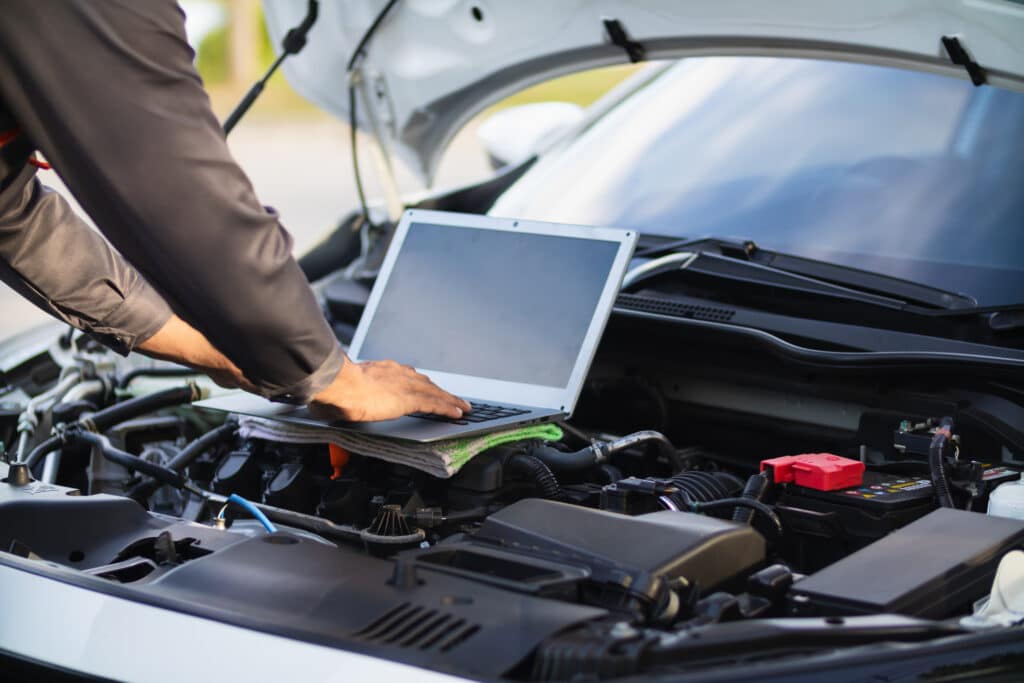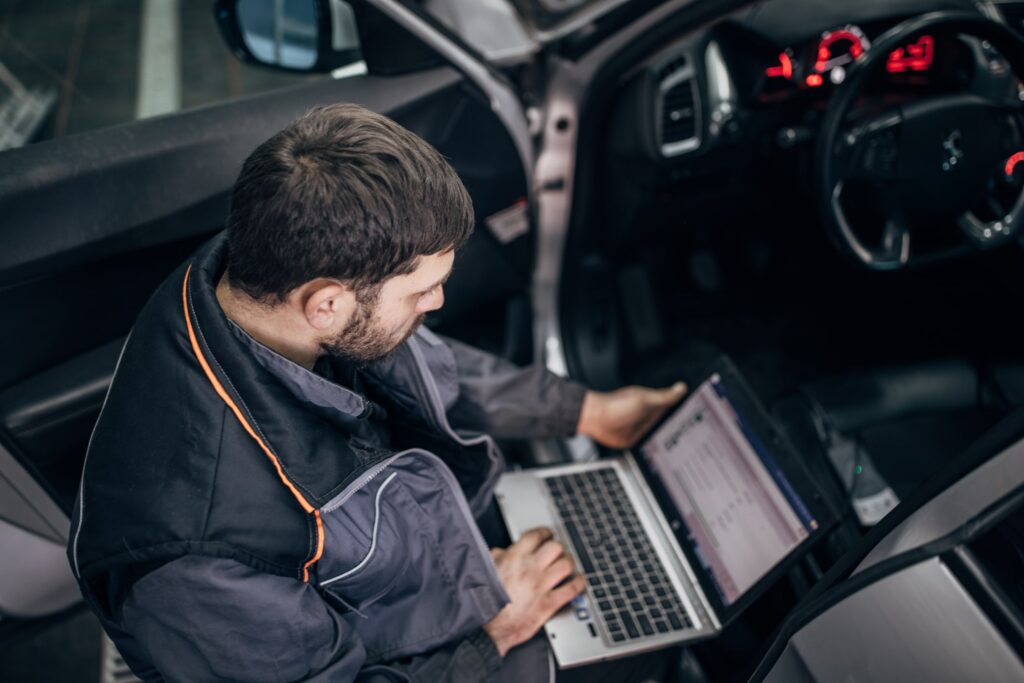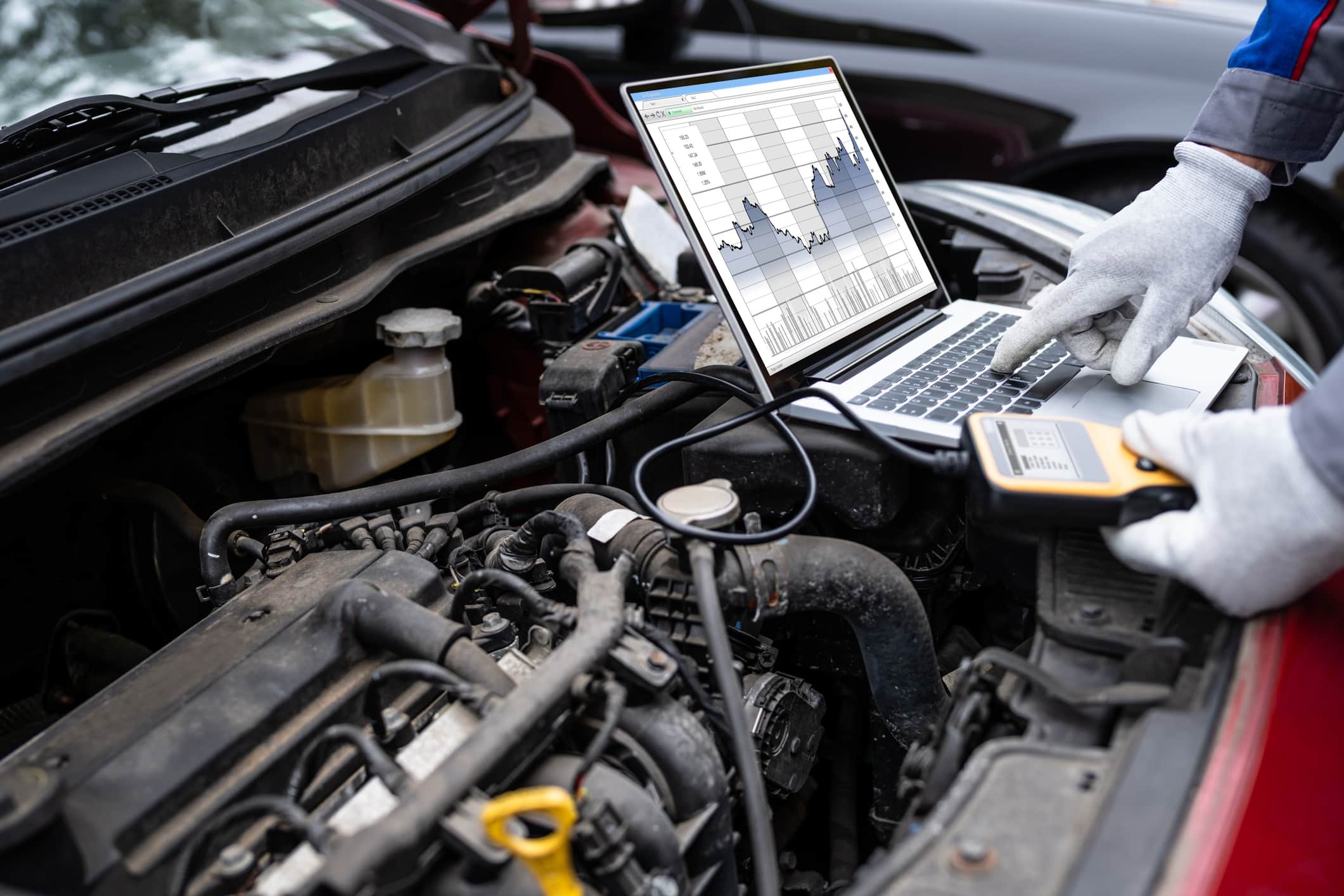Even if you’re in the habit of vehicle repair pre- and post-diagnostic scanning, you might not have realised just how important these steps are in the collision repair industry.
When a car is involved in an accident, any body shop professional will know that it isn’t just the bodywork that can be damaged. The internal systems and technology responsible for keeping the vehicle in good working order, including the airbags, hazards, EMS and fuel lines can all be affected. Since failures or issues with any of these systems could compromise the safety of drivers, it couldn’t be more important that these problems are identified, fixed and checked before the vehicle is handed back to a customer.
At JTAPE our products are designed to help you save time and money by reducing waste and improving efficiencies within body shops, especially when it comes to being able to carry out repairs. In this blog, we’ll explain more about diagnostic scanning which is another important part of the repair process.
What is a vehicle repair pre-scan?
A vehicle repair diagnostic scan involves plugging specialist equipment into a vehicle and downloading the data from its electrical and engine management systems. It can pick up on various issues before they become a bigger problem, which is why they’re so commonly used within the collision repair industry. Some of the main areas they can identify issues with include emissions, lights, tyres, electrical components and engine management components like catalytic converters and alternators. You’ll get a code which corresponds to a specific issue with a component, and these can be logged to create a damage report.
Why scanning before repair is so important
Carrying out diagnostic scanning before you jump straight into repairs can be important for a variety of reasons. Below is a reminder of just a few of the biggest benefits of doing this.
Identification of issue
Diagnostic scanning can help pinpoint an issue or multiple issues that might be going on with a car. As a body shop professional, this means you can easily spot the issues and use this to decide how you’ll tackle the repair and bring it back to the condition it was in pre-collision. It can also be ideal for discovering hidden issues, such as problems with the engine management system (EMS) that you might otherwise miss.

Helps to avoid mistakes
Without the scan, you might be more likely to make mistakes such as repairing the car in a different, less effective way. With a clear log of the issues that the car came to you with, you can spend more time working on an effective repair plan with less room for human error.
Saves time
If a scan uncovers that the full extent of the damage requires more work than initially thought, you can ensure these repairs aren’t missed and that there is a clear timeline for the repair process. Thanks to this, you and the customer can be on the same page about lead times and costs.
It can also help you and the customer avoid wasting any time by finding out straight away whether the vehicle can or can’t be repaired.
Safety
A diagnostic test can flag any safety issues with the car which you can then prioritise to make sure the customer isn’t handed the keys to an unsafe vehicle. Whether the safety problems have been created by the collision or were pre-existing, you can make sure these aren’t missed.
Manufacturer position statements
Most vehicle manufacturers, including Ford, Hyundai, Kia, Mercedes and Mazda have issued position statements recommending or even requiring pre- and po-scanning on their brand of vehicles. These statements recommend to body shops that they must follow their procedures when carrying out collision repairs, alongside many saying that OEM parts should also be used.

When to complete a pre-scan
A pre-scan should be completed as soon as possible after a customer brings in their vehicle before you begin any disassembly. This will not only stop you from jumping the gun and working on the wrong issue first, but it’ll also mean you can get a full overview of what work will need to be done. The full plan and costs involved can then be fed back to the customer before you begin working on the vehicle to make sure everybody is happy to go ahead.
Post-scanning
The main reason you should carry out a scan after the repairs are complete is to make sure all the issues have now been resolved. If the diagnostic test is still showing that there are issues with the vehicle, then you’ll know that further work is needed, where it’s needed and can continue working on it. This prevents the customer from driving away with any potentially dangerous faults that have appeared while other areas of the vehicle are being fixed. It also means they’re less likely to need to return to the body shop for further repairs later down the line, which can boost customer satisfaction and increase trust in the work from your facility. Ultimately, this can make your body shop business more successful.
Next time you have a vehicle come into your body shop for collision repairs, remember just how crucial it can be to carry out pre-and post-diagnostic scanning.
For more insights and advice on body shop practices and procedures, check out our blog.

